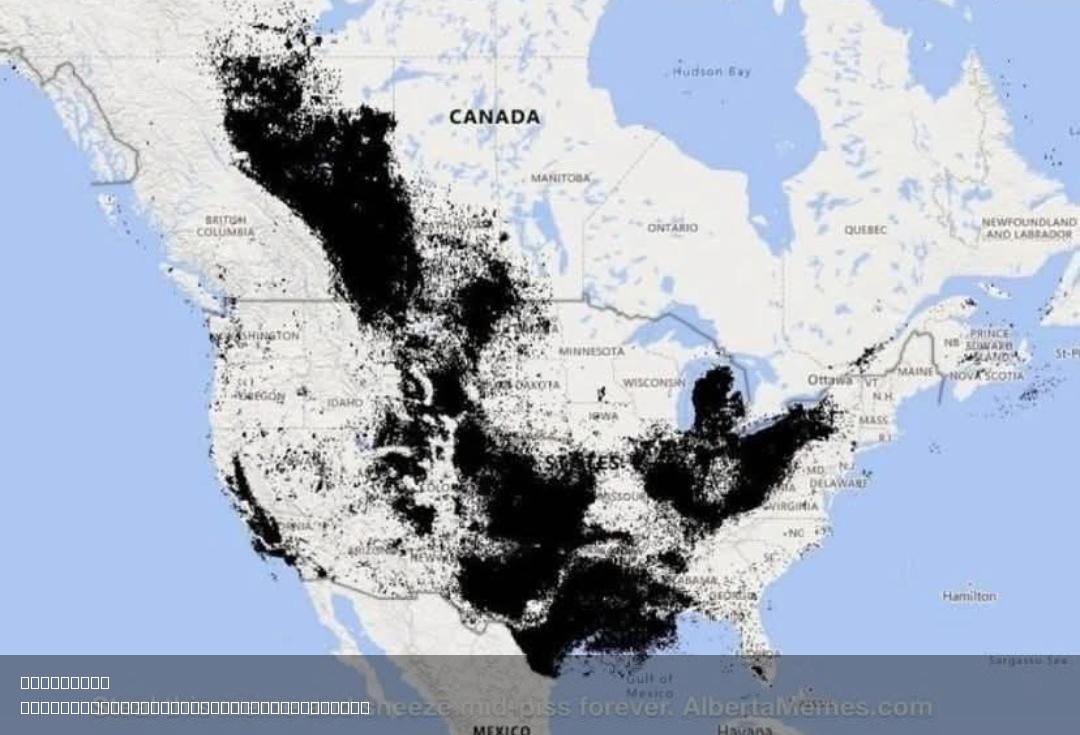Oil Reserves Map of States and Canada


David Chen
Data Visualization Specialist
David Chen is an expert in transforming complex geographic datasets into compelling visual narratives. He combines his background in computer science ...
Geographic Analysis
What This Map Shows
The "Oil Reserves in States & Canada" map provides a detailed overview of the distribution of oil reserves across various states in the U.S. and the provinces of Canada. It highlights the regions rich in oil resources, showcasing not just the quantity of reserves, but also the geographical locations that are pivotal to the North American oil industry. The map serves as a vital tool for understanding where these natural resources are concentrated, which can influence economic, environmental, and geopolitical discussions.
Deep Dive into Oil Reserves
Oil reserves are deposits of crude oil that are recoverable under current economic and operational conditions. These reserves are crucial to the energy landscape, as they directly affect energy prices, economic stability, and even international relations. According to the U.S. Energy Information Administration (EIA), the United States holds approximately 47 billion barrels of proven oil reserves, while Canada boasts around 168 billion barrels, primarily located in the Alberta oil sands.
Interestingly, the map reveals that Texas is the leading state in terms of oil reserves, with around 11 billion barrels. This state not only stands out for its vast reserves but also for its rich history in oil exploration and production. The discovery of oil at Spindletop in the early 20th century marked the beginning of the Texas oil boom, which has continued to shape its economy and identity.
Another significant player is North Dakota, home to the Bakken formation, which has seen a tremendous surge in oil production over the last decade. In fact, North Dakota's oil production has skyrocketed from just 100,000 barrels per day in 2009 to over a million barrels per day in recent years, thanks to advancements in hydraulic fracturing and horizontal drilling techniques. This rapid increase illustrates how technology can unlock previously inaccessible oil reserves, fundamentally altering energy supply dynamics.
Alberta, Canada, is particularly noteworthy on the map. The oil sands in this province are among the largest reserves in the world, contributing significantly to Canada's economy. However, extracting oil from these sands poses environmental challenges, leading to ongoing debates about sustainability and climate change. Oil sands extraction is energy-intensive and controversial, raising questions about the balance between economic benefits and environmental impacts.
Regional Analysis
When examining the map regionally, several trends and variations stand out. The Gulf Coast region, encompassing states like Louisiana and Texas, is not just rich in reserves but also boasts a highly developed infrastructure for refining and transporting oil. This area is critical for the U.S. energy supply chain, hosting numerous refineries and ports.
In contrast, the Rocky Mountain states, including Colorado and Wyoming, show a mixture of reserves and production challenges. While Colorado has significant reserves, environmental regulations and public opposition to drilling in certain areas have slowed development. This reflects a larger trend where economic interests often clash with environmental concerns.
Canada’s oil-rich provinces depict a different scenario. Alberta's dominance in oil sands is contrasted with British Columbia and Saskatchewan, where oil production is less concentrated. British Columbia, known for its environmental advocacy, has faced strong opposition to pipeline projects meant to transport oil from Alberta to the Pacific coast. These regional differences underscore the complex interplay of resource management, economic growth, and environmental stewardship.
Significance and Impact
The importance of understanding where oil reserves are located cannot be overstated. The oil industry plays a pivotal role in driving economies, not just in the U.S. and Canada, but globally. As nations transition to greener energy sources, the question remains: what will happen to these reserves? Will they become relics of a bygone era, or will technological advancements enable cleaner extraction methods?
Furthermore, geopolitical implications arise from the control and distribution of these resources. Countries rich in oil reserves often wield significant power on the global stage. For instance, Canada’s oil exports to the U.S. have significant implications for energy security for both nations.
In summary, the "Oil Reserves in States & Canada" map is more than just a geographical representation; it is a reflection of ongoing conversations about energy, technology, and the environment. With the world increasingly focused on sustainability, the future of oil reserves will be a critical topic in shaping our collective energy landscape. Ever wondered how these dynamics will evolve in the next decade? It’s a question worth pondering as we navigate the complexities of energy production and consumption in a changing world.
Visualization Details
- Published
- August 7, 2025
- Views
- 112
Comments
Loading comments...